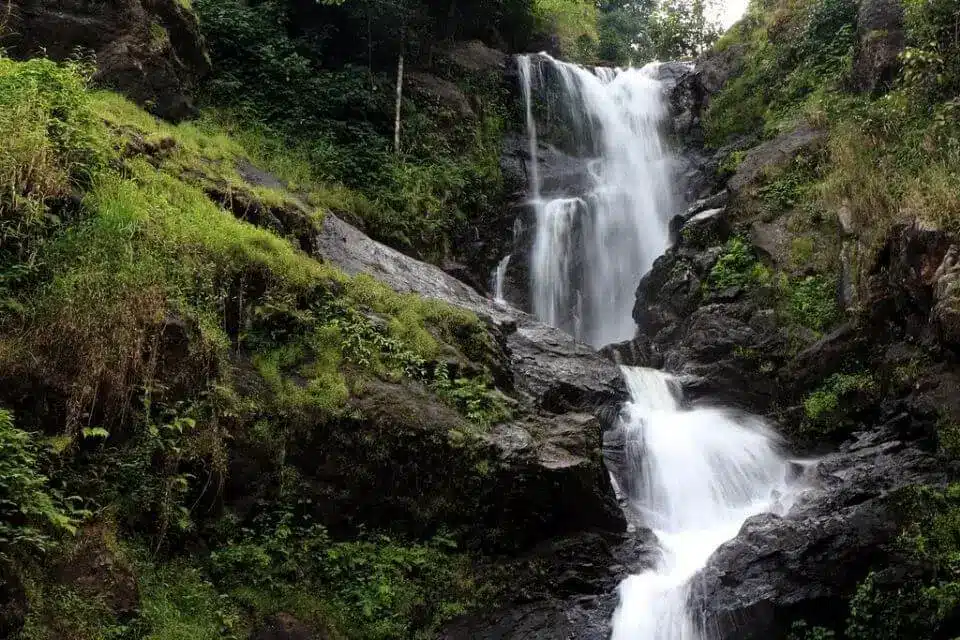About Lakshmana Tirtha River
- It is a tributary of the river Kaveri in Karnataka.
- Course:
- It originates in the Brahmagiri hills, Kodagu or Coorg District, Karnataka, and flows eastward.
- It joins the Kaveri Riverin the Krishna Raja Sagara Lake.
- Total Length: 180 km
- Lakshmanatirtha Falls, or the Irupu Falls, is a much-visited fresh water cascade located on the river, bordering Kerala, on the way to Nagerhole National Park.
Key Facts about Kaveri River
- Kaveri River, also known as Cauvery River, is one of the major rivers of southern India, which is considered sacrosanct by the Hindus.
- Course:
- It rises at an elevation of 1,341 m at Talakaveri on the Brahmagiri range near Cherangala village of Kodagu district of Karnataka.
- The river drains into the Bay of Bengal at Poompuhar, in the Mayiladuthurai district of Tamil Nadu.
- Cauvery Basin:
- It extends over the states of Tamil Nadu, Karnataka, Kerala, and the Union Territory of Puducherry.
- It is bounded by the Western Ghats on the west, by the Eastern Ghats on the east and south and by the ridges separating it from the Krishna basin and Pennar basin on the north.
- Major left bank tributaries: Harangi, the Hemavati, the Shimsha, and the Arkavati.
- Major right bank tributaries: Lakshmantirtha, the Kabbani, the Suvarnavati, the Bhavani, the Noyil, and the Amaravati.
Q1: Western Ghats traverse through which states?
A chain of mountains running parallel to India’s western coast, approximately 30-50 km inland, the Ghats traverse the States of Kerala, Tamil Nadu, Karnataka, Goa, Maharashtra and Gujarat.
Source: Lakshmana Teertha river dries up due to shortage of rainfall
Last updated on June, 2025
→ UPSC Notification 2025 was released on 22nd January 2025.
→ UPSC Prelims Result 2025 is out now for the CSE held on 25 May 2025.
→ UPSC Prelims Question Paper 2025 and Unofficial Prelims Answer Key 2025 are available now.
→ UPSC Calendar 2026 is released on 15th May, 2025.
→ The UPSC Vacancy 2025 were released 1129, out of which 979 were for UPSC CSE and remaining 150 are for UPSC IFoS.
→ UPSC Mains 2025 will be conducted on 22nd August 2025.
→ UPSC Prelims 2026 will be conducted on 24th May, 2026 & UPSC Mains 2026 will be conducted on 21st August 2026.
→ The UPSC Selection Process is of 3 stages-Prelims, Mains and Interview.
→ UPSC Result 2024 is released with latest UPSC Marksheet 2024. Check Now!
→ UPSC Toppers List 2024 is released now. Shakti Dubey is UPSC AIR 1 2024 Topper.
→ Also check Best IAS Coaching in Delhi
























